Interview - Tom and Jerry in New York : let’s talk with Keith Baxter and Greg Sims
By Mulder, Los Angeles, 23 july 2021
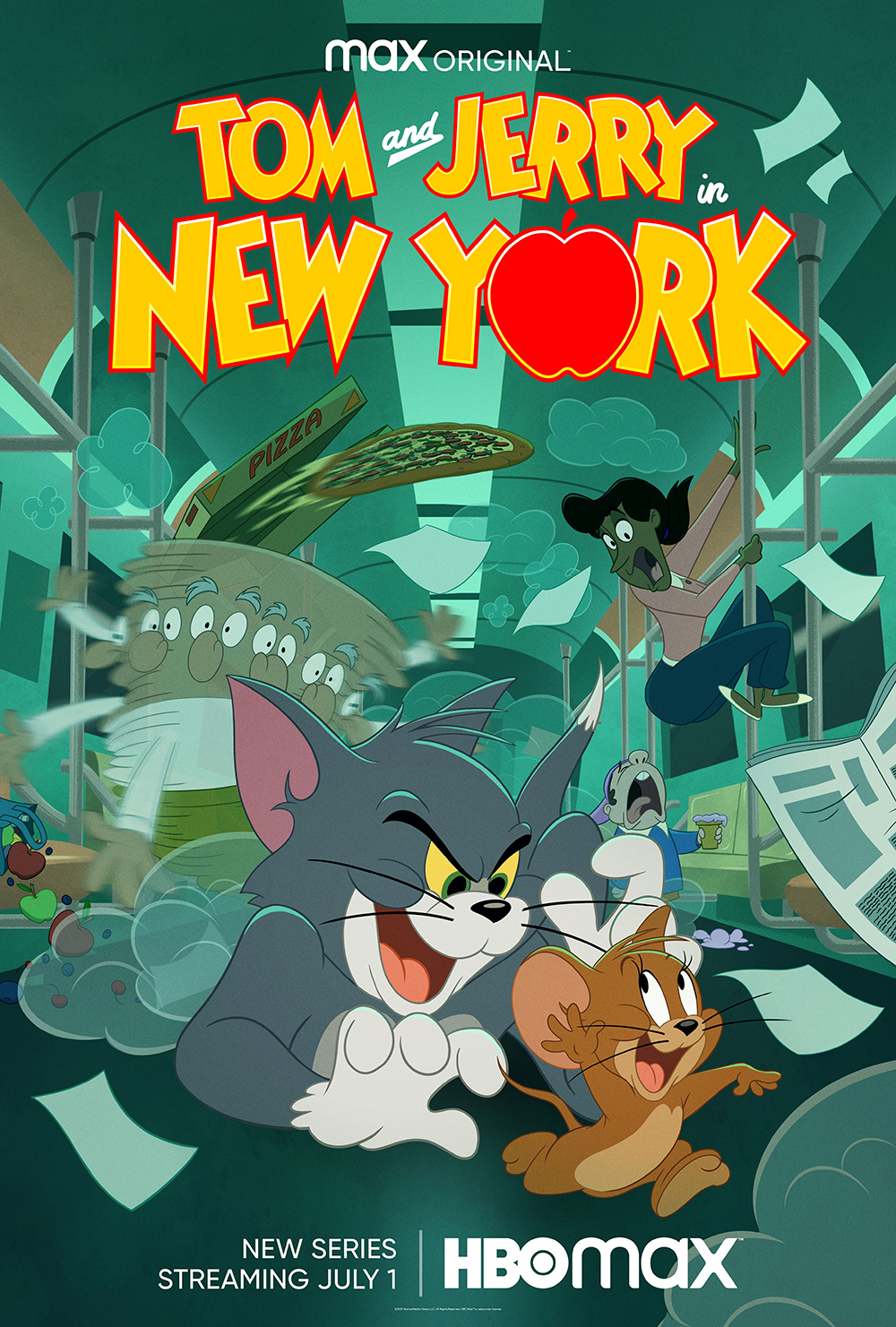
Tom and Jerry in New York is an American animated television series that premiered on HBO Max on July 1, 2021. It is based on the Tom and Jerry characters and theatrical cartoon series created by William Hanna and Joseph Barbera and serves as a sequel series to the film, Tom & Jerry, which was released in theaters and HBO Max on February 26, 2021. With episodes directed by Darrell Van Citters, the show has the same art style as The Tom and Jerry Show (2014) with the original crew returning along with William Hanna (via archive recordings) as the voices of Tom and Jerry. It features the cast of William Hanna (archived recordings), Kath Soucie, Joey D'Auria, Rick Zieff and Sam Kwasman.
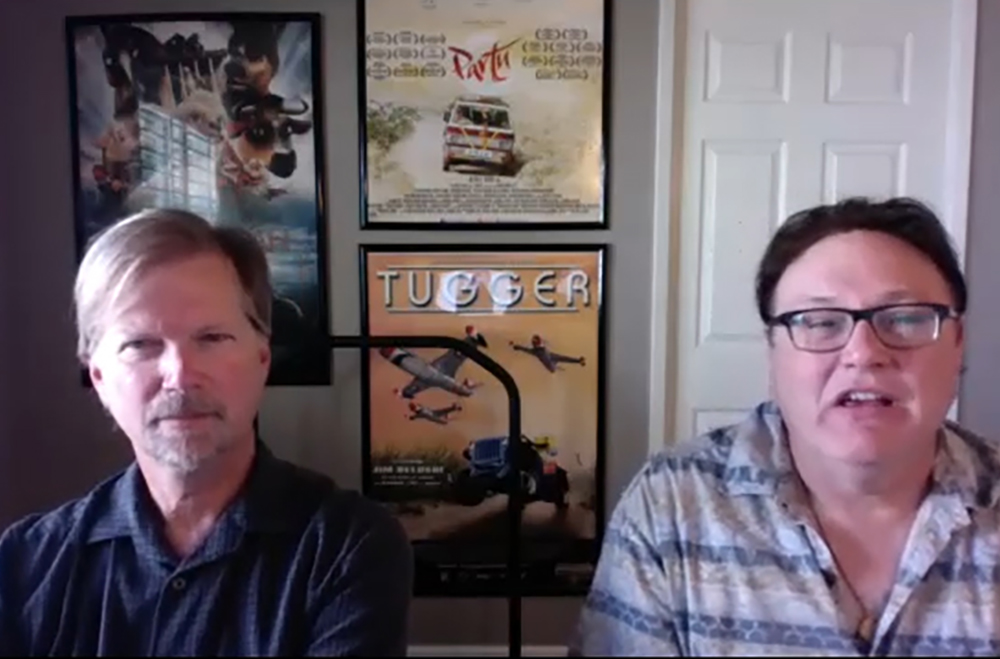
We had a talk with Keith Baxter, director, songwriter, story artist, and virtuoso guitarist and Greg Sims, composer, arranger, orchestrator, songwriter, and producer of music for film and television about the Tom and Jerry in New York animation series.
Q : Hello Keith (droite) and Greg, please can you introduce yourself and tell us a little bit about your background ?
Greg Sims : I'm Greg Sims and we're both working together on the Tom & Jerry New York series. My background is started playing piano when i was five pretty much always been into music, arranging music at a young age and then i just kept it going i really got fascinated by the symphony orchestra and started teaching myself a lot about that And i really wanted to have something to do with that in my career and then I got i heard Bill Evans on the radio one day and got fascinated by jazz and actually got a jazz degree in college and just one thing led to another I started doing advertising music and a little bit of its video and realized that i really love doing music for video so this is the 30-second version and then that led to some feature films and animation my explaining my first two film feature films were animated films and i just kept at it and eventually I was living by that that time in Nashville Tennessee and i decided to move to l.A to really go for it in a bigger way and i would joke that i was on the 200-year plan in Nashville so i wanted to try to accelerate that a bit and so i moved out here a few years ago and things are going pretty well.
Keith Baxter : i'm Keith Baxter born and raised in Canada and moved to the U.S when i was 20 to go to music school. i also started playing music real young and drawing i couldn't decide whether i wanted to be a professional artist or a professional musician and i didn't know how to find an art school but the music school that i ended up going to they used to run an ad in the back of guitar player magazine so that's how i picked my music school. I showed up in Los Angeles and studied under some amazing musicians and then played music for a living for a number of years then the other thing i had loved was drawing and so i applied it in the animation studio and they hired me so i did that i started out as a character designer my very first show was i think was the last episode of She-Ra Princess of Power and from there i went on to work yes i worked on things like Ghostbusters and the first like real high profile show i worked i think was tiny toons and then i stayed at Warner Brothers for a good long while i went on to Tasmania then i quit to go study computer animation came back and was the animation supervisor on one of the very first CG animated projects it was called Marvin the martian in the third dimension and it played at the at the Warner Brothers store in New York and then it played a theme park called movie land and there's one in Germany and one in Australia and then i saw it did a few more years of Warner Brothers then when Dreamworks started their studio they hired me away and I worked at Dreamworks developing some shows for a while wrote songs and scripts for a show called Toonsylvania and then i think after that i went over to Disney somewhere in there somewhere i was at Disney it's all a big blur now worked on a lot of stuff there went back to Dreamworks .We've got stuff over there and so it kind of bounced back and forth between music and animation over the years when I had kids it was really important to have a steady paycheck coming in so that meant i was doing a lot more animation than i was music but a couple a few years ago and i've lost track of time but i met Greg through his wife i was working at Sony on one of the Hotel Transylvania movies and i always used to play my guitar out of the coffee cart at lunch and one day this little blonde lady comes up to the gate here's me playing guitar and i'm playing jazz standards and she starts singing from the other side of the gate and she was amazing one of the other employees led her in and we sang and played songs for an hour and then we got to be friends and they invited me over i got to hear some of Greg's music he played me some stuff he'd written trying to get a Star Trek gig and played me some songs for a play musical that he's writing and we just all became real fast friends and then the first chance i got to work together with Greg we did something for one of the Hotel Transylvania and then we did a couple more things that didn't get made then i got a call from Warner Brothers the story supervisor on Tom and Jerry asked me if i would write some Tom and Jerry musicals and the first time I turned him down i was busy working on something else but he called me a year later which was last july and he asked me again and this time we had become a writing team and i was just having so much fun working with Greg that this time i said yes and so we started writing musicals for Tom and Jerry.
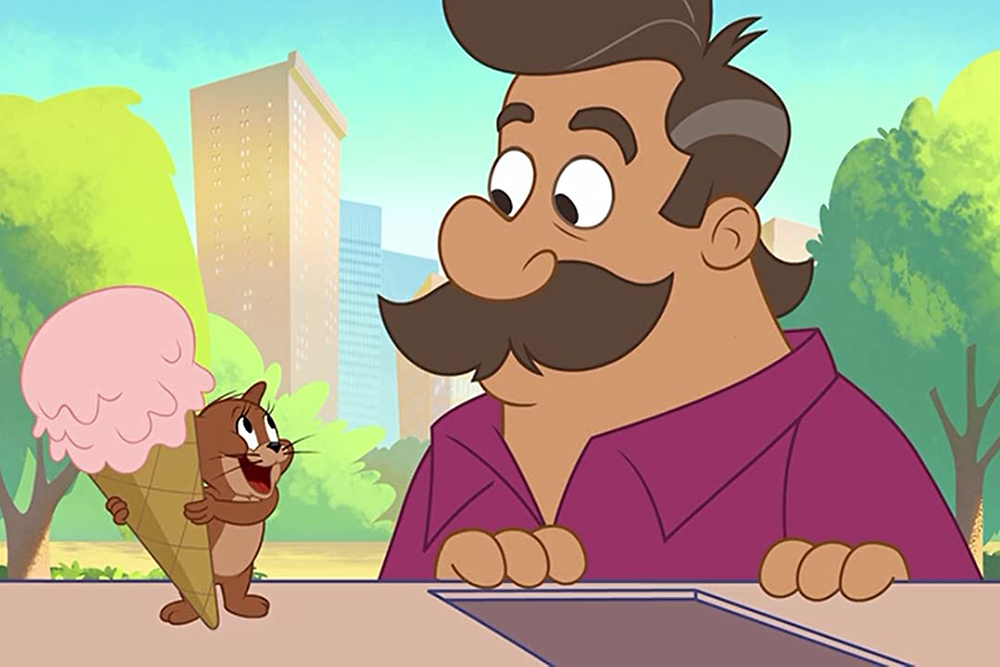
Q : You have recently worked on the Tom and Jerry in New York score, please what can you tell us about the seven episodes of this series ?
Keith Baxter : well you know we do a segment all of the musicals are three minutes long that was just how Warner Brothers wanted it and so we mix it up we do all kinds of different styles of music for the different episodes just whatever seems to fit the story so i would pitch premises for the cartoons to the story supervisor and he would clean out the ones that he knew well they're never gonna go for that or we've already done one that's a little bit like that and then the ones that were left Warner Brothers would pick one for me to go forward with and then i'd write the cartoon which typically meant writing the lyrics as well since that's such a integral part of these and Greg and i would figure out what kind of song that we wanted to do and once we had enough of the song in place where i could break off and start storyboarding then Greg would start recording the music and orchestrating and arranging it and then we would we put the pictures the frames of storyboard on a program like premiere or final cut along with the music and the music and the storyboards would kind of develop together so sometimes Greg would look at some of the drawings and he'd say oh how about I do such and such with the strings or what if the bassoon did this and then sometimes he would in his arrangement i'd hear something and go oh wow hey what if Tom does this when the arrangement's doing that so it would continue to evolve through the entire time i was storyboarding and after so we had three and a half weeks to do a cartoon and at the end of it they kind of like the music was completed right around the same time as the last storyboard was done and then we would send it off
Greg Sims : and i think Tom sings for the first time since like 1940 something
Keith Baxter : that's right yeah we have Tom both Tom and Jerry do a little bit of singing.
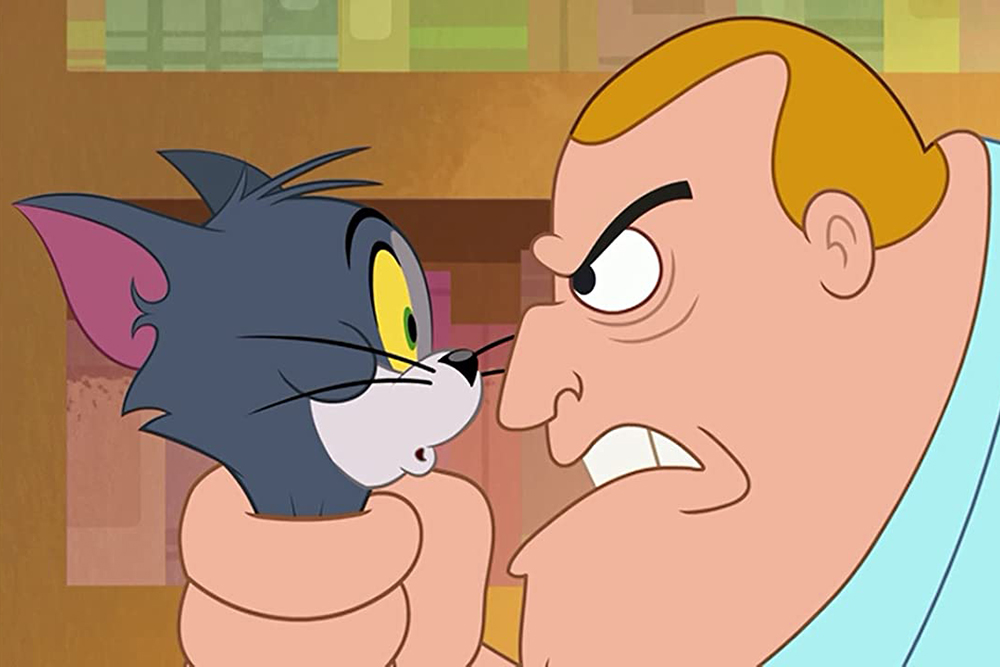
Q : For you, how to explain the worldwide success of the adventures of Tom and Jerry ?
Keith Baxter : oh why are they so popular. Well, i think the original Tom and Jerry's were extremely good cartoons really funny. You know some jurors have been made and remade over the years sometimes not so successfully as the first ones that Hannah Barbara did but though the really good Tom and Jerry, i think they're kind of timeless that like young kids today could watch the Tom and Jerry and not feel like these are just old cartoons they're you know they're just funny they're incredibly well animated, great funny gags and the thing about cartoons you don't know
Greg Sims : as a kid how old they are you think these are just made and you know so you're not prejudiced against your parents liking jumping Jerry.

Q : What must be for you a great collaboration between a director and composers? What can you tell us about your collaboration with Darrell Van Citters ?
Keith Baxter : oh well, so Daryl Van Sitters created a launch package now because of covid everyone's working from home and in an ideal world all of the story artists would have assembled together with but when we started Daryl had put together an incredible launch package so it's a real danger when you try to do a classic cartoon like that a generic version of them gets made but Daryl was extremely precise in what made Tom and Jerry cartoons and commentary animation different from say looney tunes animation or Disney animation if you look at a character like Bugs Bunny or Daffy Duck they you know they stand and they walk around like they're kind of like they're human beings unless there's a special reason why they have to like sometimes you'll see Bugs Bunny hop like a rabbit but generally speaking he stands around like as a human being but if you look at the animals and Tom and Jerry they all when they're relaxing their paws you know they stand like they're animals and so Daryl was just so, he had so many wonderful insights into how to capture the Tom and Jerry and he had very specific cartoons for us to look at like he didn't say look at any old tom and jerry it was it was about maybe 30 cartoons from a very specific era when Hannah Barbera were doing the cartoons at MGM and they were just incredibly funny and incredibly well animated cartoons so then after i mean Daryl would approve the premise there was an approval process where Daryl and the producers at Renegade animations and the executives of Warner Brothers that they would either approve or disapprove the cartoons and but then we were left alone to make what we were gonna make and then we handed this this rough edit of the cartoon and then Daryl took it from there and he didn't change a lot of things but when things needed to be changed he'd step in and fix stuff and just a wonderful opportunity working with those guys and i hope to work again with them real soon .
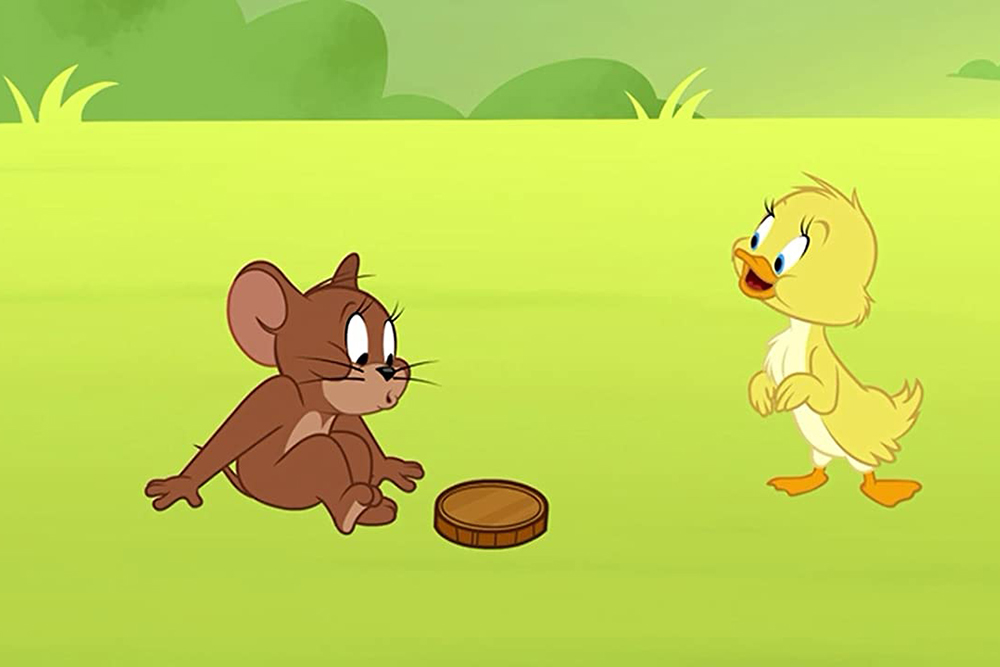
Q : What can you tell us about the importance of the music in this series, we have different kind of music here, jazz, classic rock and others ?
Greg Sims : the importance of the different styles. well i think one reason i fell in love with animation at an early age and probably a good reason my first two films were animations because of the like you said the importance of music is much more so in animation and say live action and i think more as much as anything because of the tradition of accentuating every movement, everything that happens the music's driving it so and then so it's no different in the Tom and Jerry cartoons and another thing too that like for instance there's a surf it's not been released yet but there's a surfing episode that we did and so you know we do you did 60 surfing music you know a lot of Beach Boys and so did that style you know which fit the mood of the music of the of the images and so i think that's don't you think that's probably true that the in animation use the music is even more important
Keith Baxter : and in these ones what's very different is the music's created first and in virtually all other cartoons. The animation is all completed and then only then does it go to the composer to write a score for it but this was the completely driven by the music so that music was probably the most important thing after the fact that they were Tom and Jerry
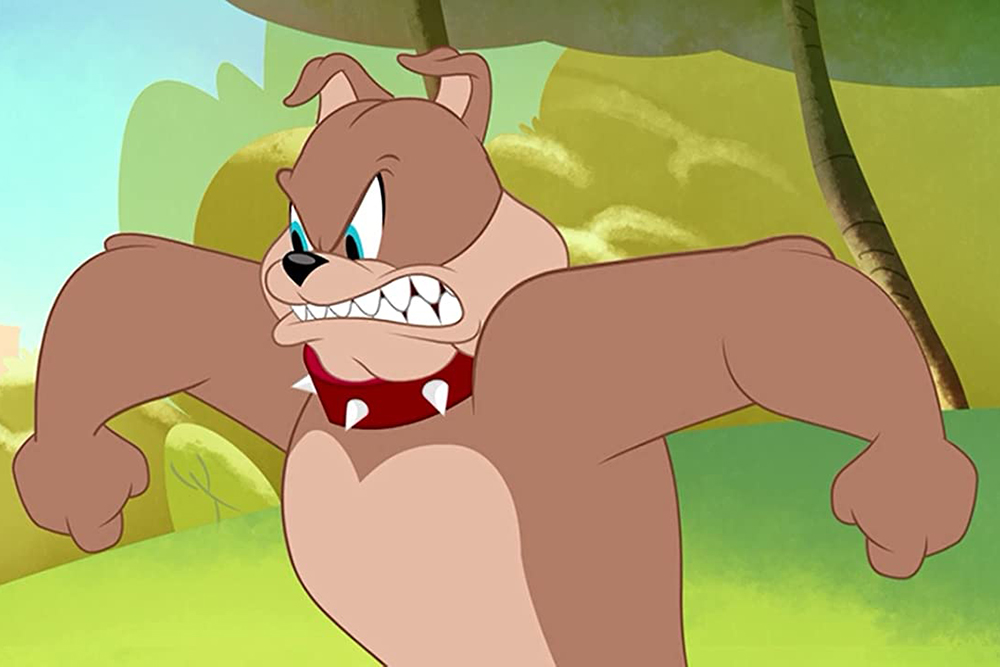
Q : What were your main sources of inspiration to create your amazing score and how do you share the work on this series ?
Greg Sims : well that was another kind of first Keith pointed out you don't usually get we don't usually get to collaborate the animator with the you know as and plus Keith is above doing both which i don't know any other person in Hollywood doing that so really made it and so we kind of made it up as we went along i guess you just came up with a method it just sort of evolved where he would like he said he would come up with a story and usually had had the lyrics done and a big chunk of where the music was going and then we would combine and as he was drawing and i'm doing other things other ideas would come in and we one would affect the other so it was a lot of back and forth and it also helped that we lived i would ride my bike and he would walk over and we would convene that way so you know the fact that we were so close geographically was really made it a lot easier and then i think we complement each other's abilities a lot as well unfortunately he doesn't also play piano he plays he's an incredible guitar player so that that helped and with cove going on we didn't have to really go outside our community much to get everything recorded that we needed and the inspiration
Keith Baxter : i'd say the inspiration for the music well we're both huge fans of Carl W. Stalling who did all the Looney tunes stuff in the in the day music wise, Greg is got a huge classical repertoire and under his belt i'm more of a pop music guy so i know a zillion pop songs starting from the 40s going forward Greg knows an incredible amount of scales of scales incredible amount of classical music and Greg got a degree in jazz my main focus in music school was jazz guitar so we kind of cross over there a little bit so for my pop inspirations the Beatles are always first and foremost for me and then but then for doing these kinds of songs with fun lyrics the Sherman Brothers that did the old Disney songs Ashman and Mankind the newer ones and then all of the great Broadway composers as well i love Sondheim i think he has written some of the most incredible lyrics that any human being will ever write.
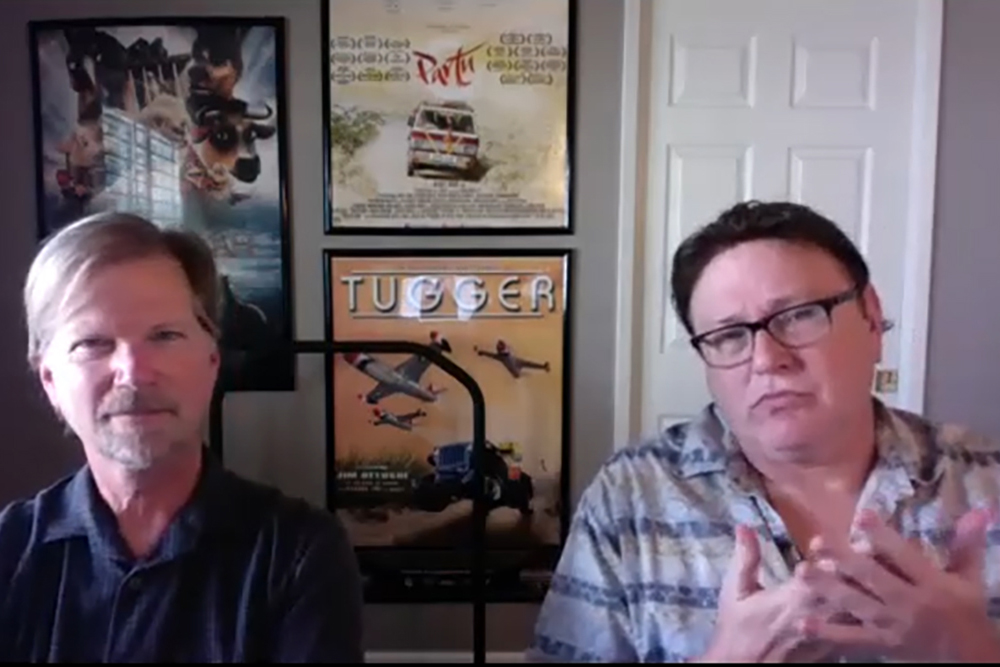
Q : What is for you the main duty of a good composer ?
Greg Sims : well i'm serving the film. I mean that that's you know i think the role number one and getting paid.
Q : Keith Baxter you have worked on a lot of great movies as a storyboarder for example Missing Link, Hotel Transylvania 3: Summer Vacation, Smurfs: The Lost Village, Surf's Up 2: WaveMania. How be a great storyboarder helped you concerning your work on Tom and Jerry In New York ?
Keith Baxter : Well you know it sounds kind of egotistical for me to call myself a great storyboard artist but to be a great story artist you well you have love movies you have to love making films you have to just love the idea of trying to do something new and you have to love telling stories. I guess that's it you have to love telling stories is that's the most important thing I know how to tell a good story and then and then and then do your best to tell it in an entertaining fresh way you know. i think that just because of time pressures and in television animation a lot of times there's not there's not enough time for people to come up with real original things that you've got a crazy schedule to turn your storyboard in. I really feel like the storyboards in the shows that we did for Tom and Jerry i feel like all the gags are original. They're just you know my attempt to make people laugh that so for me you know and that's the other thing is different story artists have different strengths normally a movie he'll cast like oh he's good at doing action he's good at doing acting he's good at doing comedy so you know it's good to be able to do as many of those things as you can but most story artists are best at you know one of those things and I just really like trying to come up with funny things. Greg is sending you a link in your chat in the chat box (you can discover it here https://youtu.be/x-ZF2TRthfI). I just sent you an animatic so you can see what they look like before so here's a sample of one of the animatics that we put together and this one we can show this one didn't get made for the series so since certain so since Warner Brothers didn't pay for this one i just went ahead and made it and stuck it on youtube but as you can see it's a very detailed storyboard there's a lot going on there.
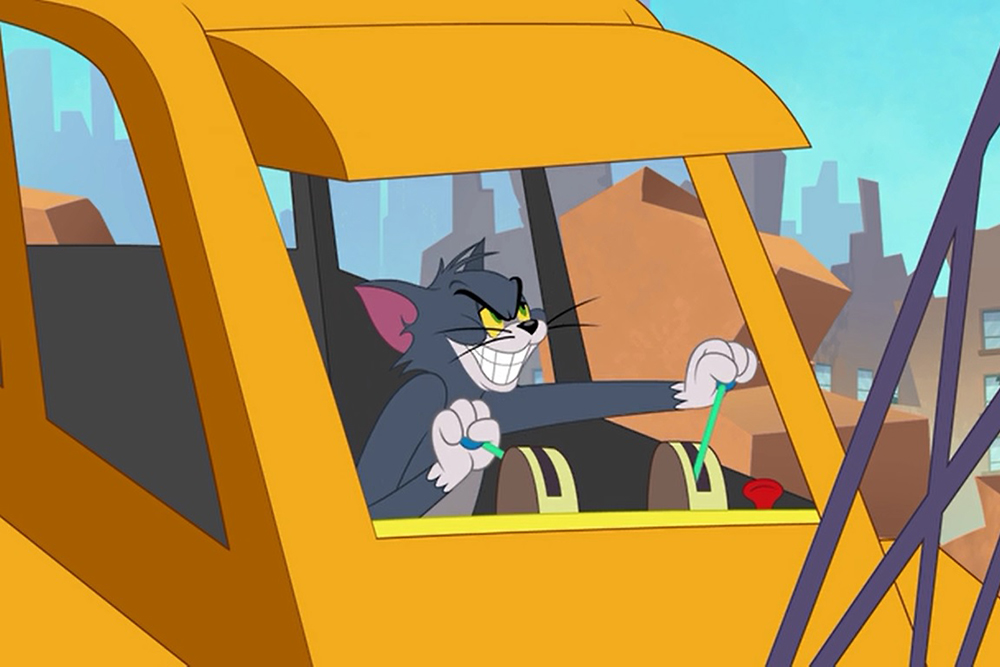
Q : what are for you the important elements to make a good animated series as this one ?
Keith Baxter : it's characters and stories and music.
Q : Which is your Tom and Jerry in New York favorite episodes and why ?
Keith Baxter : Well the ones that that we contributed to. i'm gonna say the pie piper of Harlem that this one isn't out yet but it'll be in one of the next batches that they released i just felt like we got better and better and then for the first one it was really scary because i had never tried to put something like this together in three and a half weeks so i didn't even know if it was possible and normally as a story artist you don't get involved in editing the your story panels to music but there was no other way to do this so in addition to co-writing the music and storyboarding I also had to do a rough edit in order to convey what we're trying to do with the cartoons so each one that we did i got more comfortable with how much we could accomplish and so i think by you know a little after doing a couple of them we finally got to figure out. Well we can actually do more than we were doing in the in the first ones and by the time it got to the third one it was it was almost animated at the at the storyboard level so and that's really important because in television it's the storyboard drawings may very well be the best version of that pose that will ever exist like it's only going to go downhill from there or at least you can't count on the follow-up animation to be any better so it's very important for the story artists to hit that pose as strongly as they can because that may very well end up on the screen on television.
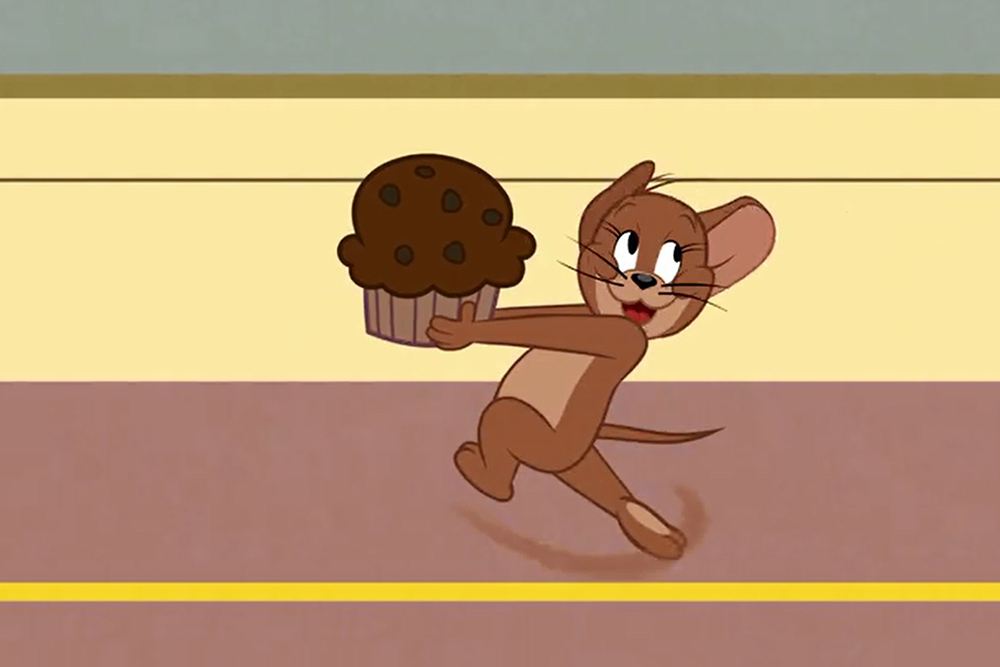
Q : Can you tell us about the impact of the current global pandemic on your work ?
Keith Baxter : well i've been joking that i've been socially distancing for the last 40 years so what we do i had already been working at home for four years just because LA is just so hard to commute so every studio no matter where i lived i would always get hired at the studio that was at least 90 minutes away
Greg Sims : so and same way the composers i mean we you know we our commute is from the kitchen to the bedroom after getting our coffee so the only challenge a little bit was just we couldn't really go to a studio you know to record this so we brought everyone in like one at a time here so he could control that unfortunately and my wife's a fantastic singer we've got friends that are great singers so we have great resources one of the singers did it remotely and emailed it you know so literally we never left the room we had a name for this place was it second bedroom productions
Keith Baxter : but when we needed a singer that we didn't have access to well a lot of singers nowadays they have their own studios so Greg sent them a track to sing toa and this fellow was in Nashville and he sent back you know five amazing different versions of the song and we just picked the one we liked the best .
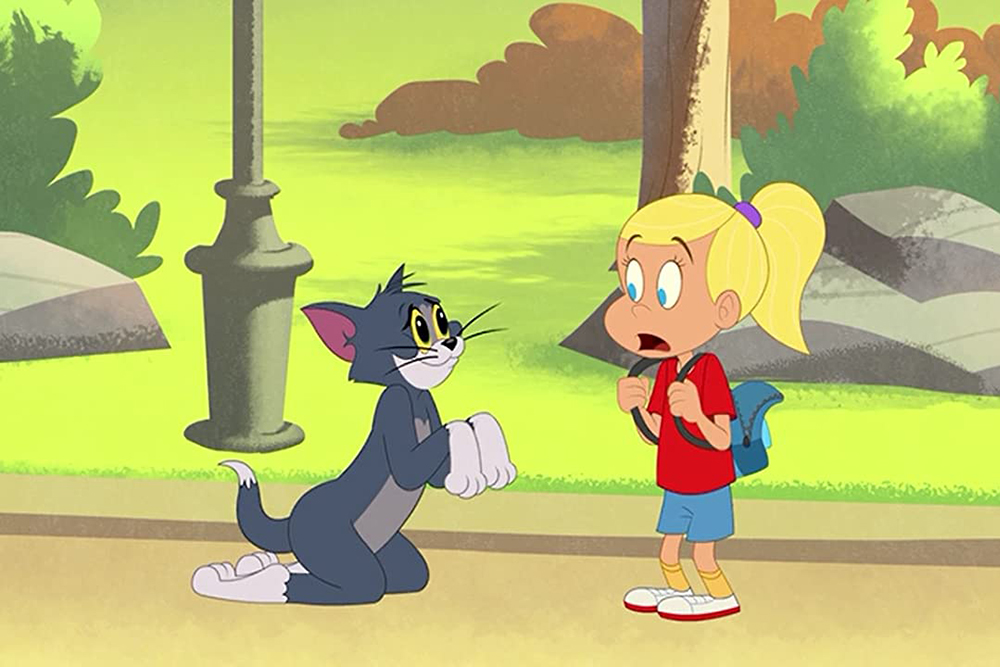
Q : Which American directors would you like to work with and why ?
Keith Baxter : i am huge fans of Trey Parker and Matt Stone of South Park talk about a guy who can write great funny songs and Brad Bird as you know of the theatrical animation directors i love every movie he's made they're all at the very top of my favorite movies. i don't remember their names unfortunately but the directing team that did Tangled (Nathan Greno and Byron Howard) that they made an unbelievably great movie i think there's lots of of great people that around here that would be just amazing to work with.
Q : Which are your current projects ?
Keith Baxter : Well the things that are in the works. We can't talk about it's too early to talk about them i mean i have projects that i have developed and then there are projects that we're approached by. i could probably talk about the ones that i've developed but there's some doesn't feel right about it until we know they're going forward so we're just gonna have to hold off talking about
Greg Sims : yes it's too soon unfortunately but to say anything
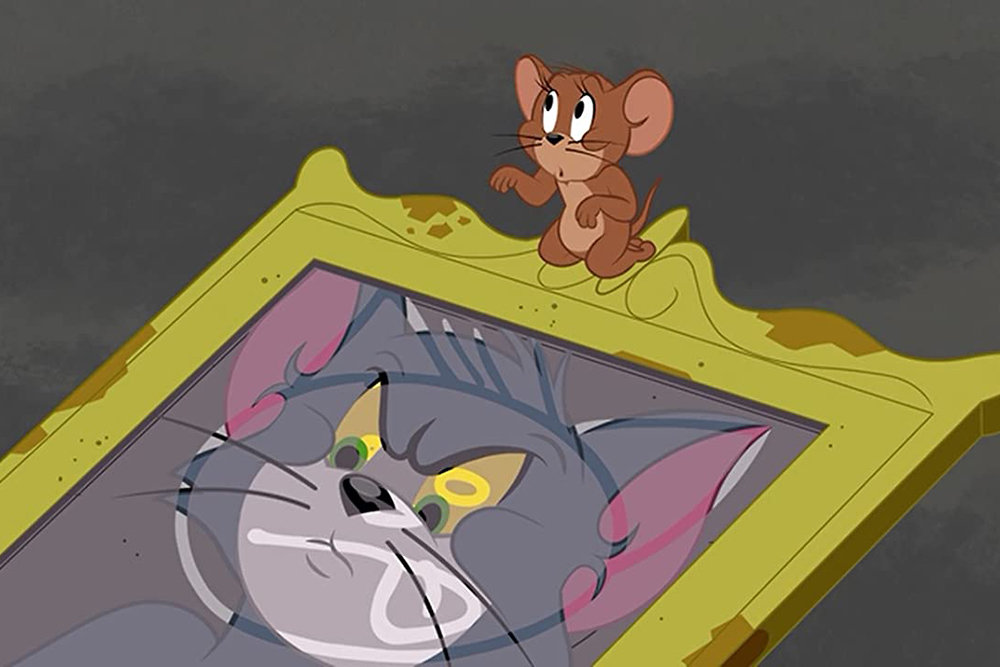
Q : my last question, what kind of advice could you give to someone who would like to work as a musical composer ?
Greg Sims : run away. Well i would say that boy you really have to have a passion for doing it and you can't you have to be enough of an ae type personality it helps at least in Hollywood but to have a little bit of an a type personality because you've got to spend a lot of time face time and selling yourself you've got to be able to do that and the talent's just kind of one of those things i mean i guess you gotta you know you gotta have that for sure but it's mostly persistence and perseverance and long hours i think a lot of people it sounds a very romantic thing to do but the fact is if you're not used to working until the moment you get up and until the moment you can't stay awake anymore and loving it then it's probably not for you but so i think passion per perseverance i'll never stop working on your skills especially the way the technology i went through when the technology was went from pencil and paper to computers you know so sometimes there's a quick change and you have to you want to keep up with the technology and learn as much as you can about engineering and uh stuff that doesn't seemingly have to do with your job because as a composer you have to be all those a performer an engineer a composer a ranger you know and i do some conducting now too so that's you know throw all that into the mix. you have to be able to wear a lot of hats so it takes a lot to develop all that all those skills
Keith Baxter : i have nothing to add
Greg Sims : i stole it from him yesterday .
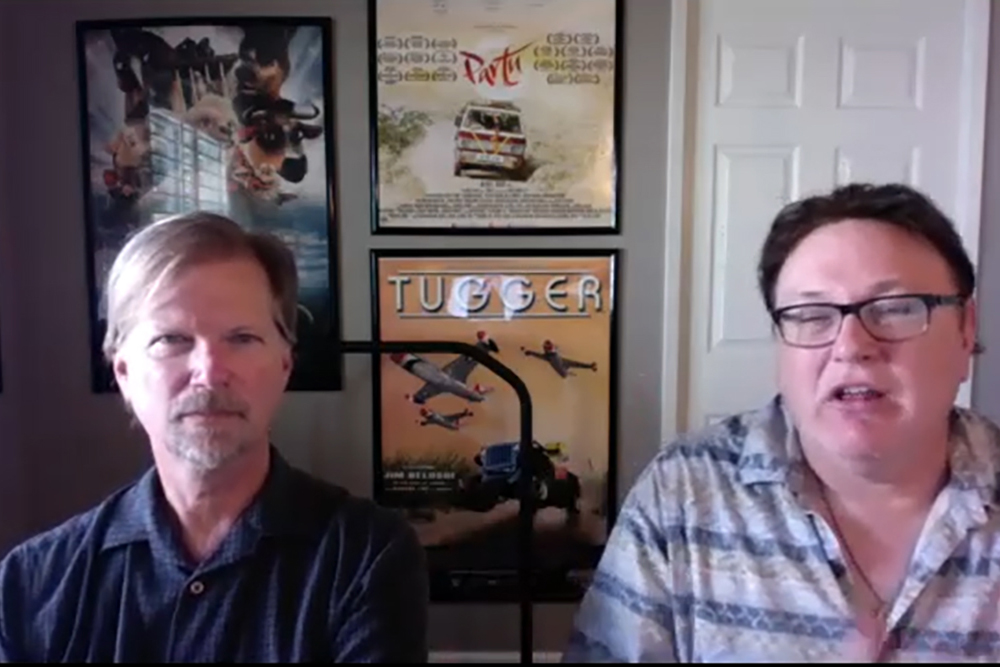
Synopsis :
Follow the iconic cat and mouse duo as they settle in to their new digs at the Royal Gate Hotel and unleash mayhem across the big city, inciting hilarious chaos uptown, downtown and everywhere their manic escapades take them.
Tom and Jerry in New York
Characters created by William Hanna and Joseph Barbera
Directed by Darrell Van Citters
Voices of William Hanna, Kath Soucie, Joey D'Auria, Rick Zieff, Sam Kwasman
Theme music composer : Scott Bradley
Composers : Keith Baxter, Greg Sims, Dan Blessinger, Jim Covell, Itamar Ben Zimra
No. of seasons : 1 : 7 episodes (28 segments)
Executive producer : Sam Register
Producers : Ashley Postelwaithe, Darrell Van Citters, Kimberly S. Moreau
Running time : 21 minutes (4 5-minute segments)
Production companies : Turner Entertainment, Warner Bros. Animation
Distributor : WarnerMedia Direct, Warner Bros. Domestic Television Distribution
Original network : HBO Max
Original release July 1, 2021 – present
We would like to thank Keith Baxter and Greg Sims for this long and amazing interview and Margot Nissenblatt.
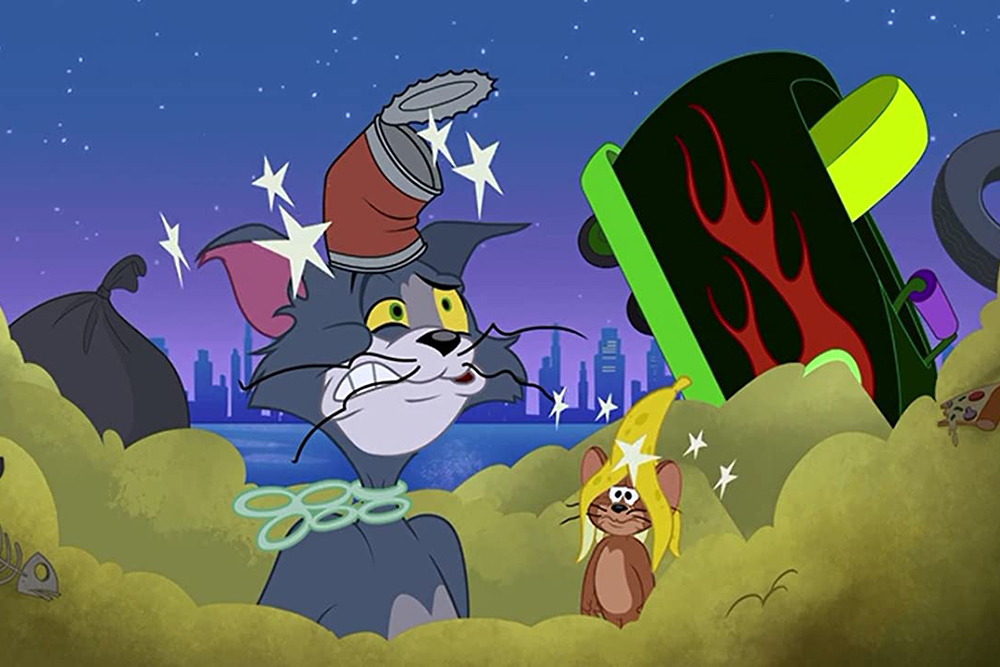
Photos : Copyright Warner Bros / HBO Max

